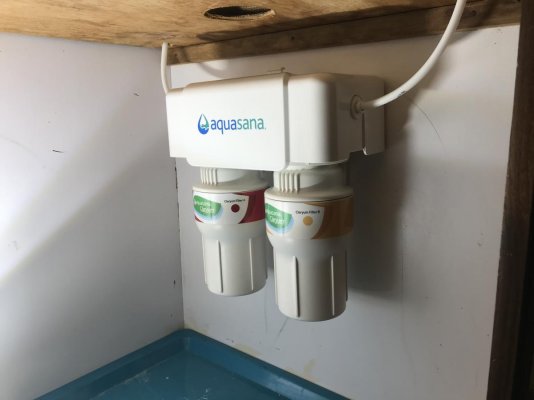Whgoffrn
Veteran Member
Ok so I'm a new trawler owner just purchased our boat 2 weeks ago and I'm curious how does everyone keep their water in their tanks potable.....I know you can add small amount of bleach and be safe but bleach only lasts so long and then the stagnant water becomes useable ....newbie lessen already learned....I have a pool my kids decided to quit using and it went green well considering the tanks in the boat hold 400 gallons of water and the water has been sitting in the tanks for 3 months i know its probably bad by now .... I did a little experiment on our green pool today ...filtered the water with a Sawyer filter first, then a zero filter and finally a berkey filter.....and still threw up twice today and feel like crap despite all 3 filters claims to take all pathogens out of the water.....I did however miscalculate bleach drops to add to the water and only added 2 drops per gallon instead of 2 drops per quart but I really had high Hope's the 3 filters would have gotten all contaminates out but as I lay in bed listening to my stomach churn i know that's not the case .....what does everyone do to their water tanks to make it safe to drink???

